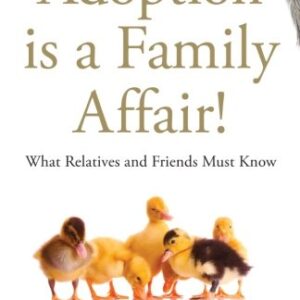The Conundrum of Age Assignment for Children Adopted from Abroad
Introduction
The establishment of age for children adopted from abroad can be challenging for parents and adoption professionals. When children have been left in a public place without a note, adults are forced to guess the age. For infants, this age assignment is pretty easy especially if there is a remnant of the umbilical cord. For older children it is more challenging and depends on the practical experience of those adults who find and place the child.
Those families who receive referrals of children who come into care without a known birth date need to be mindful of cultural and clinical factors related to age assignment. Even though doctors may be called upon to make the guess in the child’s country, there often is insufficient information to determine the age accurately. The reality is that the final determination of age will not be able to be made until the child has arrived and been in the U.S. for a couple of years. With more awareness of the difficulties with age assignment, I believe better age assignment will occur.
China
Referrals from China may include a mention of a note found with the baby at the time the child was located and placed in care. That Date of Birth is used for the preparation of the child’s official paperwork. Otherwise, the babies are usually found as newborns and a best guess is made. Older children found without a note will require the same process as described below for Ethiopia.
Vietnam
Since adoption re-opened in Vietnam June 21, 2005, the child’s date of birth is the date the child comes into care at the orphanage. When we evaluate the baby in the U.S. the child is usually a couple of months older than the stated age. This is of little import as the child is very young and being off by a few months has little effect on the long range scheme of things in this child’s life.
Russia, Guatemala and most other countries where children are born in hospitals and are placed in orphanages or foster care directly from the hospital.
Children come into care from maternity hospitals for the most part and their age is known. If a child is a foundling, the guidelines used in the discussion about Ethiopia are the same.
Ethiopia
With the growth of adoptions from Ethiopia, the relevance of this issue has increased substantially due to some social and cultural reasons. Children in Ethiopia come from a culture where birthdays are not celebrated and birthdates may not be remembered at all, even by adults who may have known the child since birth. This is especially true if the child is born into poverty. In cities or large rural centers, there was record keeping by the Kebele (district) authorities which included birth and deaths. In the last decade this kind of record keeping has diminished with changes in the government structure.
Over the last few years, as adoptions have sharply increased, age assignment for abandoned and/or disadvantaged children referred for adoption has become a very important issue for families adopting from Ethiopia. The following is a list of factors making this issue of age assignment among children from Ethiopia very challenging.
Children who are older are more difficult to place if they are “too old”, so there is a natural tendency to under-estimate the age of the child.
Albeit hard to measure and confirm the duration, malnourishment is commonplace among Ethiopian children being referred for adoption, causing slower-than-average physical development and growth. This is called failure to thrive and the child is smaller and can appear much younger than the actual age.
When a child comes into initial protective care, government officials (police, case workers in holding centers, doctors who are general practitioners, not pediatricians) make a best guess in terms of physical age.
Children are frequently born with low birth weight and/or premature. This alters the best guess ability. It also interferes with bone x-ray accuracy to ascertain physical age as well.
The Ethiopian calendar is about 7 years behind the calendar in the U.S. and most other countries and the records may be inaccurately interpreted by those who prepare the admission reports
How do I help families handle the complexities of age assignment for older children?
The first statement that must be made at the outset is that this decision is not all that scientific. And the hope that you can do a blood test, a dental x-ray and/or a bone x-ray that will give us an exact age, is not realistic. There are some tests that can be supportive of the assignment of age, but age assignment takes time and is based on development, school performance in children, and social maturity. This is a process that may take about two years to complete depending on the nutritional and developmental status of the child when the child first arrives. Within two years most parents have made an appropriate assessment of their child’s age.
X-rays of the bone or teeth will be unrevealing upon the child’s initial arrival because children adopted from abroad are usually malnourished and the age of the bones and teeth eruption pattern are delayed. Prematurity and low birth weight can alter the exactitude of x-ray diagnosis.
As an adoption medicine specialist, I ask parents to wait for two years before doing anything and to use this time to collect data. Visits to the pediatrician will be useful because developmental screening is part of each visit. Children will grow and develop and do the amazing catch-up that we frequently see over time. Children will have play dates and it will become apparent over time how close in age the child is to peers. For children who take classes and attend school, teachers will observe the child and can report on the behavior and class participation which will be helpful with cognitive assessments. The teachers will also know the social maturity of the child. Teachers see how the child performs socially and can report on that behavior. This wait-and-see approach maps adaptation and puts us all in the better objective position to assess the child’s age. Older children may also be able to share how old they are, once they have learned English and attach to their family.
Once this two year adaptation period is complete and we have gathered valuable data from teachers and parents/family/friends, I suggest a set of dental x-rays and a bone age, which is a set of x-rays of the right hand and wrist or in some cases knee x-rays. Children do not mature at the same rate. Just as there is wide variation among the normal population in age of losing teeth, the bone age of a healthy child may be a year or two advanced or delayed. The eruption of teeth and the replacement of the primary dentition with permanent teeth is quite variable. Age estimated through developmental and school assessments may be supported by bone age and dental x-rays to arrive at a final assessment. If the x-rays and dental films are not revealing, which is common, I don’t use them to determine actual age.
Internationally adopted girls may menstruate early and have precocious puberty which is not well-understood. Some families have used menstruation to help estimate age, but this may be a misleading way to determine age.
Those families who receive referrals of children who come into care without a known birth date need to be mindful of these cultural and clinical factors related to age assignment. Even though doctors may be called upon to make the guess in the child’s country, there often is insufficient information to determine the age accurately. The reality is that the final determination of age will not be able to be made until the child has arrived and been in the U.S. for a couple of years. With more awareness of the difficulties with age assignment, I believe better age assignment will occur.
Changing the date of birth in family court in the U.S. can be arranged after the age has been determined with letters of support from the family, teacher, pediatrician, and supporting documentation (dental x-rays, bone age x-ray report can be offered if they support the other psycho-social and developmental pieces of evidence).
copyright 2007 by Dr. Jane Aronson, email: orphandoctor@aol.com





